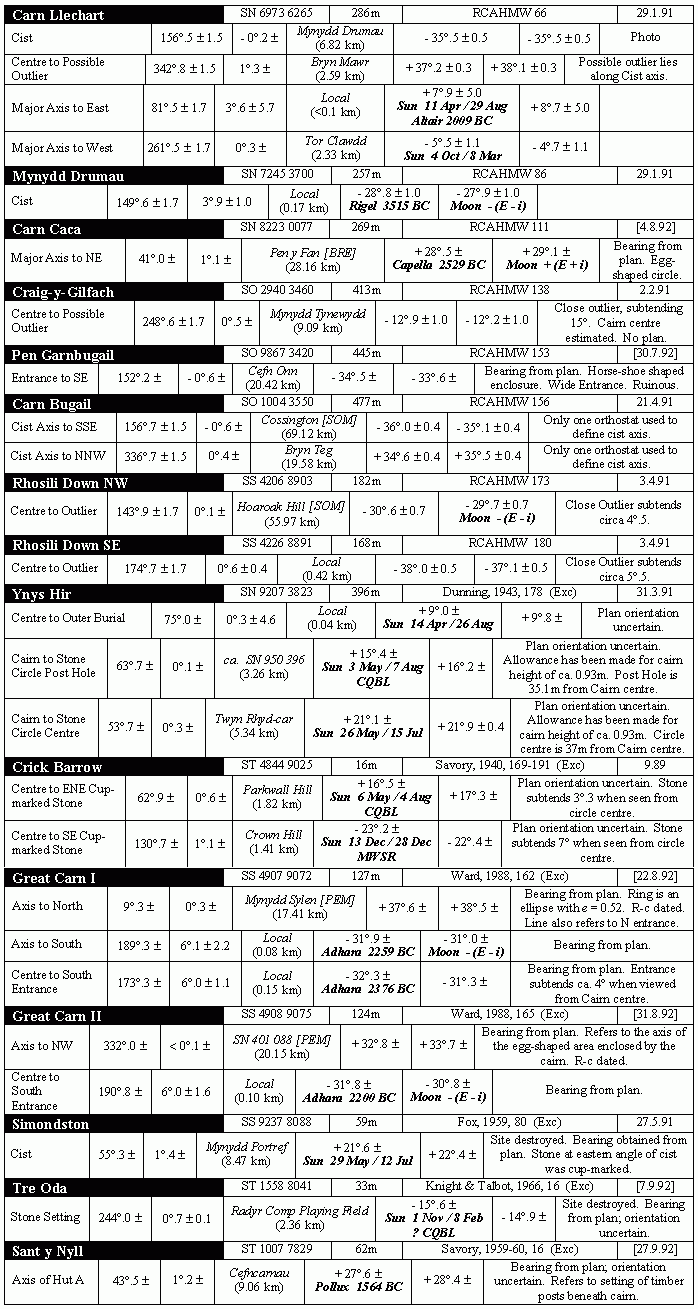|
|
|
| Archaeoastronomy in South Wales: |
| Round Cairns & Round Barrows |
Round Cairns & Round Barrows
by Martin J. Powell
The sites featured in this table represent only a small fraction of the total existing sites of this type in South Wales, with a considerable variation in the suggested types of aligned features. The list is a good representation of Bronze Age man's wide variation around the theme of a simple round cairn.
|
|
The Rhosili Down NW cairn (Rhosili Down Cairn II), whose outlying stone may have been directed towards the major Southern Moonrise. |
Two particularly unusual sites are included in the list. A former round barrow at Tre Oda (ST 156 804), in the Whitchurch district of Cardiff, was excavated in 1966 and was found to cover an intriguing rectangular setting of stone slabs at its centre, about 3 ft (1 m) square. The excavation plan shows it to have had a well defined orientation, and it is studied here in an astronomical context. Peculiarly, no burial was found anywhere within the mound. A round cairn at Sant-y-Nyll (ST 100 783), just outside Cardiff, was excavated in 1940 and 1958 and apart from a cremation pit at its centre, was also found to contain post holes of three timber structures of some kind. All of the structures appear to have been orientated NE-SW.
Two of the monuments listed were found to have man-made depressions known as cup-marks built into their design. At the now destroyed Simondston cairn (SS 924 809), near Coety, a small stone inside the central cist had five shallow cup-marks on its inner face. Two cup-marked boulders at the Crick Barrow (ST 484 902), one with 17 cup-marks and the other with 23, were positioned in astronomically significant positions within a crudely made stone ring (Powell 1995, S49-S56). Cup-marks, along with spiral and lozenge motifs, have been thought to represent an astronomical symbolism at numerous sites across Western Europe.
Survey Results (Explanation of Data Table)

Copyright Martin J Powell August 2001
| Archaeoastronomy in South Wales: |
| Round Cairns & Round Barrows |
|
|
|
|
|
|
|